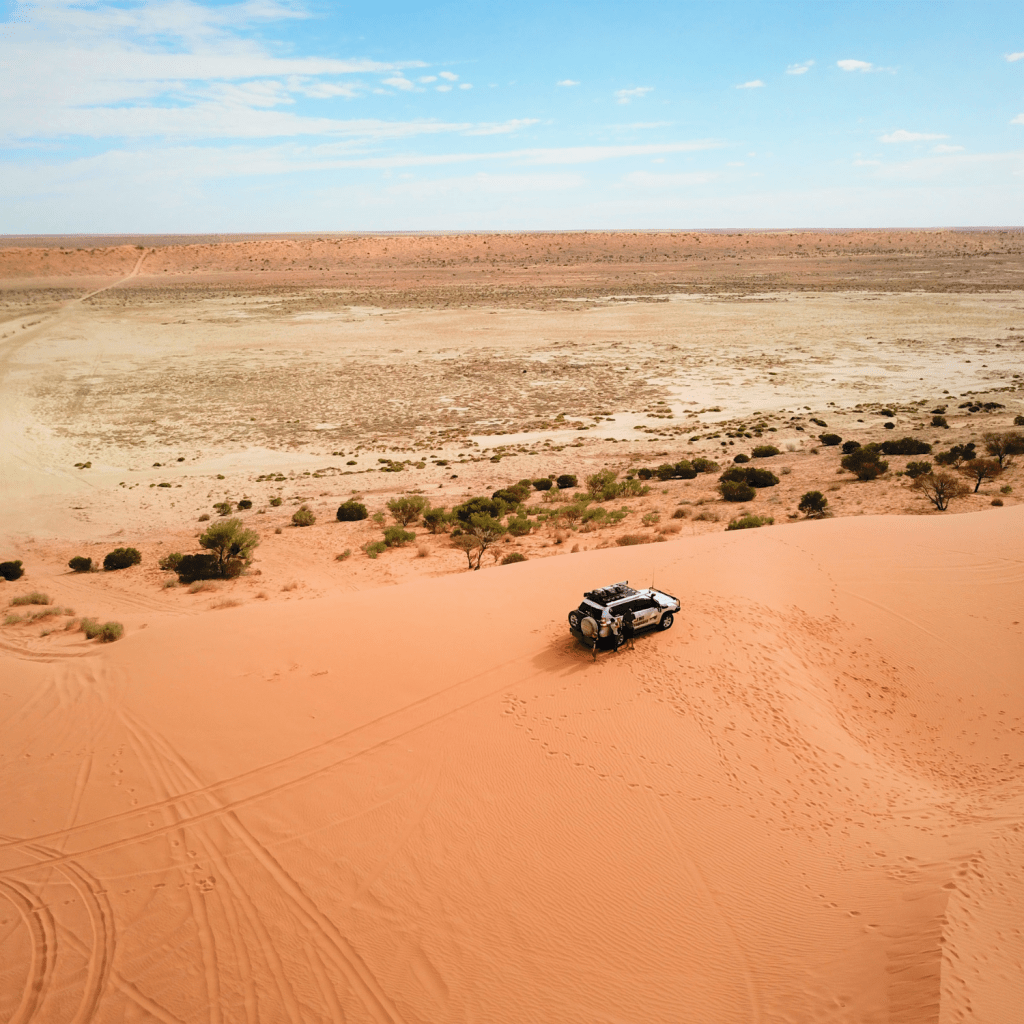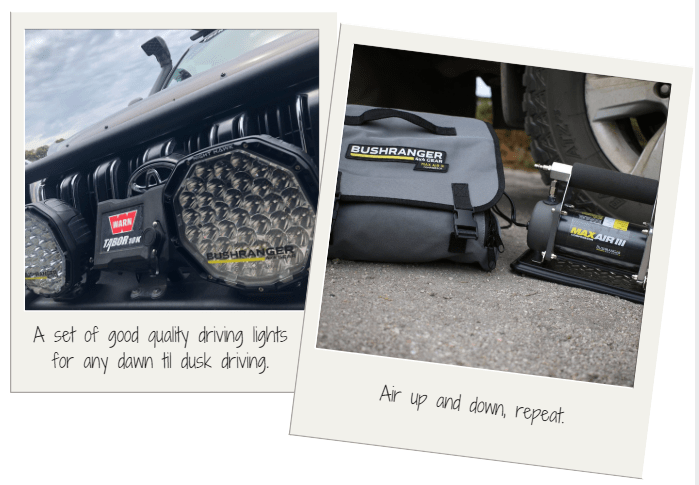Written by | Trekking Downunder, Amy & Ryan Murphy
There are always going to be challenges when travelling, things to consider, potential hazards, trip preparation, routes and maintenance. But it just seems when you are venturing into the remote corners of the outback there are a few more things to add and a lot more detail is needed.
I would say the most crucial consideration in remote Outback travel preparation is knowing where you’re going and not just a rough idea – the exact roads and if you can, kilometres. Knowing your exact route will give you a guide of how much food, fuel, water and/ potential spares you will need to pack for a successful trip. Knowing the routes, you’re taking will make documents, permits, passes and bookings easier too as you can work out timelines once you know your stops and stay lengths.
Often you will discover there can be many kilometres between food, freshwater, petrol and people, so as part of your preparation you must be sure to consider the following areas of preparation.
Understand the planned itinerary. By pre-planning, you will be able to see how much time/distance there is between access to reasonable food shops, water fill points, waste disposal points (both garbage and toilet), service centres, petrol stations and even hospitals or chemists.
Carry maximum water. By having all the water you can, you ensure that if stranded, you have enough water to sustain yourself until help arrives. The RDFS recommend 7-10L/person/day. Be sure to carry maximum fuel too, this combined with knowing your km’s to go you can reduce the risk of running out in a non-serviced area.
Before hitting up the outback tracks, ensure to have the car and van suitably prepared and checked over. Have the vehicle and van serviced, rotate tyres if needed and ensure to have the wheel bearings and brakes checked.
Keep your weights in mind. With the added food, water and fuel it’s important to note that you can easily exceed your maximum loads [weight] when preparing for trips like these, so be sure to travel within your limits and with only the bare essentials.
Our Essential List
Satellite phone with Epirb – For any emergencies and communication in non-reception areas, never venture into the remote outback without one.
Navigator – A Navigator dash system with full off-road options will provide invaluable directional guidance through unmapped tracks as well as mapped. It’s not a bad idea to travel with paper maps also as an emergency backup.
Running Lights – Run in addition to your car headlights, a set of good quality driving lights for any dawn till dusk driving. The Bushranger LED Nighthawk VLI Driving Lights are incredible for clarity and distance.
Rubbish removal – Most remote areas do not have rubbish facilities so you must take them with you. The Bushranger Wheelie Bin Bag on your spare tyre (also an essential) will make bagging and transporting garbage far less messy and keep our outback beautiful.
Air compressor – There is no point heading to the outback tracks without a quality air compressor. For the number of times, you may need to air up and down; the Bushranger Max Air III is one of the greatest assets to any vehicle set up with the reliable motor, long leads and easy trigger, it makes for quick work.
Feeling prepared is the best way to start a trip – because how you start something- sets a precedent for how it will end.
Useful Links:
- Bushranger Night Hawk VLI Series LED Driving Lights, more information here.
- Bushranger Wheelie Bin, more information here.
- Bushranger Max Air III Air Compressor, more information here.
- Head over to Trekking Downunder’s Social pages to follow their adventures.



